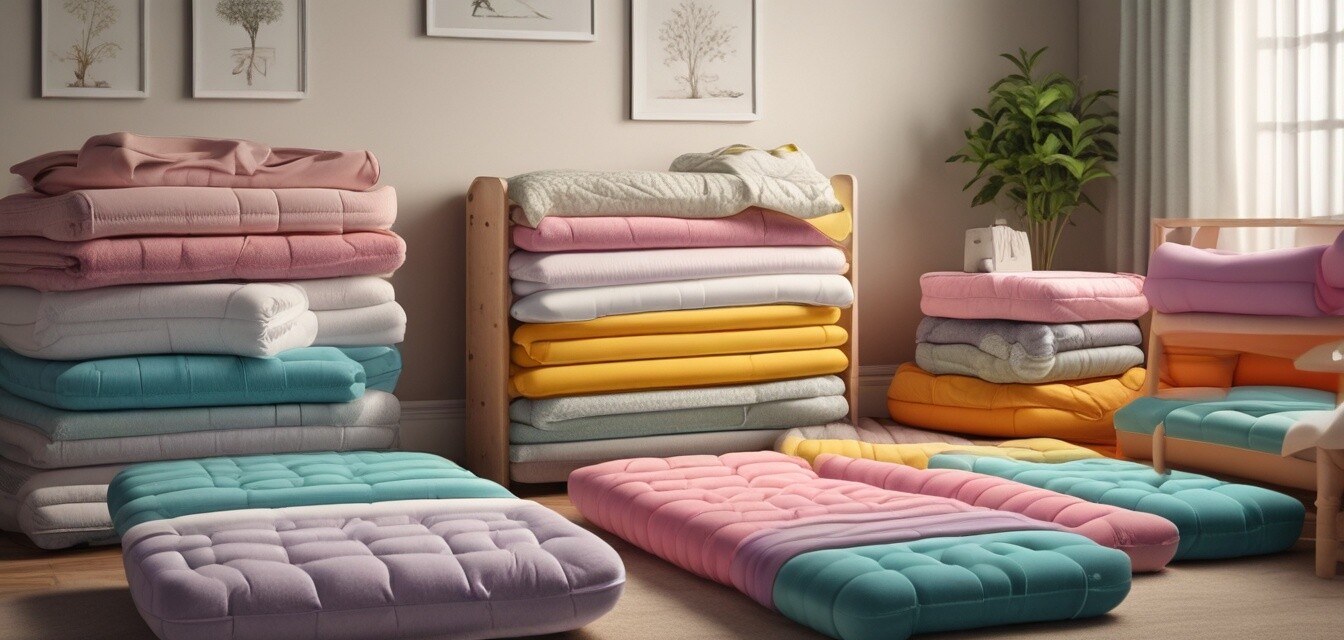
Tailoring Your Cot Mattress to Your Baby's Needs
Key Takeaways
- Choosing the right cot mattress plays a crucial role in your baby's comfort and safety.
- Consider materials that are hypoallergenic to minimize allergy risks.
- Select a mattress that fits snugly in your cot to ensure safety.
- Different infants may prefer different mattress firmness based on their sleep positions.
- Regular maintenance is essential to prolong mattress life and cleanliness.
Finding the perfect cot mattress for your baby is vital for their comfort and safety. With so many options available, it can be overwhelming to determine which features best suit your child's unique needs. In this guide, we’ll explore key factors to consider when selecting a cot mattress tailored to your baby's requirements.
Understanding Baby's Sleep Needs
Babies spend a lot of time sleeping, and finding the right cot mattress can significantly impact their rest. Here are some factors to consider:
- Age and Weight: Different stages of growth may require different levels of firmness.
- Allergies: Hypoallergenic materials can prevent allergic reactions.
- Sleep Position: Babies may prefer firmness depending on whether they sleep on their back, side, or stomach.
Choosing the Right Material
When selecting a cot mattress, the materials used are crucial. Below is a table showcasing popular cot mattress materials and their benefits:
| Material | Benefits |
|---|---|
| Memory Foam | Provides excellent support, contours to the baby's body, and helps distribute weight evenly. |
| Innerspring | Breathable, provides good support, and is more traditional in design. |
| Latex | Natural, durable, and hypoallergenic, making it a great choice for allergy-prone babies. |
| Organic Materials | Free from harmful chemicals, safer for sensitive skin and overall health. |
Size Matters: Finding the Perfect Fit
The size of the cot mattress is essential for safety. A mattress that fits snugly in the cot will help prevent gaps where a baby could become trapped. Here are some size considerations:
- Ensure the mattress fits the cot dimensions perfectly.
- Check for any manufacturer specifications regarding size requirements.
- Look for adjustable sizes that cater to growing babies.
Understanding Firmness Levels
Firmness is crucial in supporting a developing baby. Here’s a quick guide:
| Firmness Level | Recommended For |
|---|---|
| Soft | Generally not recommended for infants due to suffocation risks; good for toddlers transitioning out of a crib. |
| Medium | Suitable for active sleepers as it provides comfort and support without being too soft. |
| Firm | Recommended for infants to reduce the risk of suffocation and ensure proper alignment. |
Hygiene and Maintenance
Keeping your baby's cot mattress clean is vital. Here are some tips for maintaining mattress hygiene:
- Use a waterproof mattress protector to reduce stains and spills.
- Regularly air out your mattress to prevent mildew.
- Spot clean with mild soap and water when necessary.
- Follow proper washing instructions if the cover is removable.
When to Replace Your Cot Mattress
Always keep an eye on the condition of the mattress. The following signs can indicate that it’s time for a replacement:
- Visible sagging or depressions.
- Allergic reactions or increased sneezing/coughing.
- Harder to clean stains or persistent odors.
- If the mattress is over 5 years old.
Tips for First-Time Parents
- Take your time comparing different mattresses before making a choice.
- Visit local stores to experience the mattress firmness before purchasing.
- Read reviews on various cot mattresses, especially about safety and comfort.
- Consider the long-term investment; quality mattresses tend to last longer and provide better comfort.
Conclusion
Choosing a cot mattress tailored to your baby's needs is essential for their development and safety. By considering factors like materials, sizes, and firmness levels, you can confidently make an informed decision. If you're looking for more information, check out our detailed buying guides for cot mattresses to help streamline your selection process.
Pros
- Improved safety through proper fit and materials.
- Enhanced comfort for better sleep posture.
- Long-term investment with quality options.
Cons
- Higher quality mattresses can be more expensive.
- Some materials may require specific maintenance.